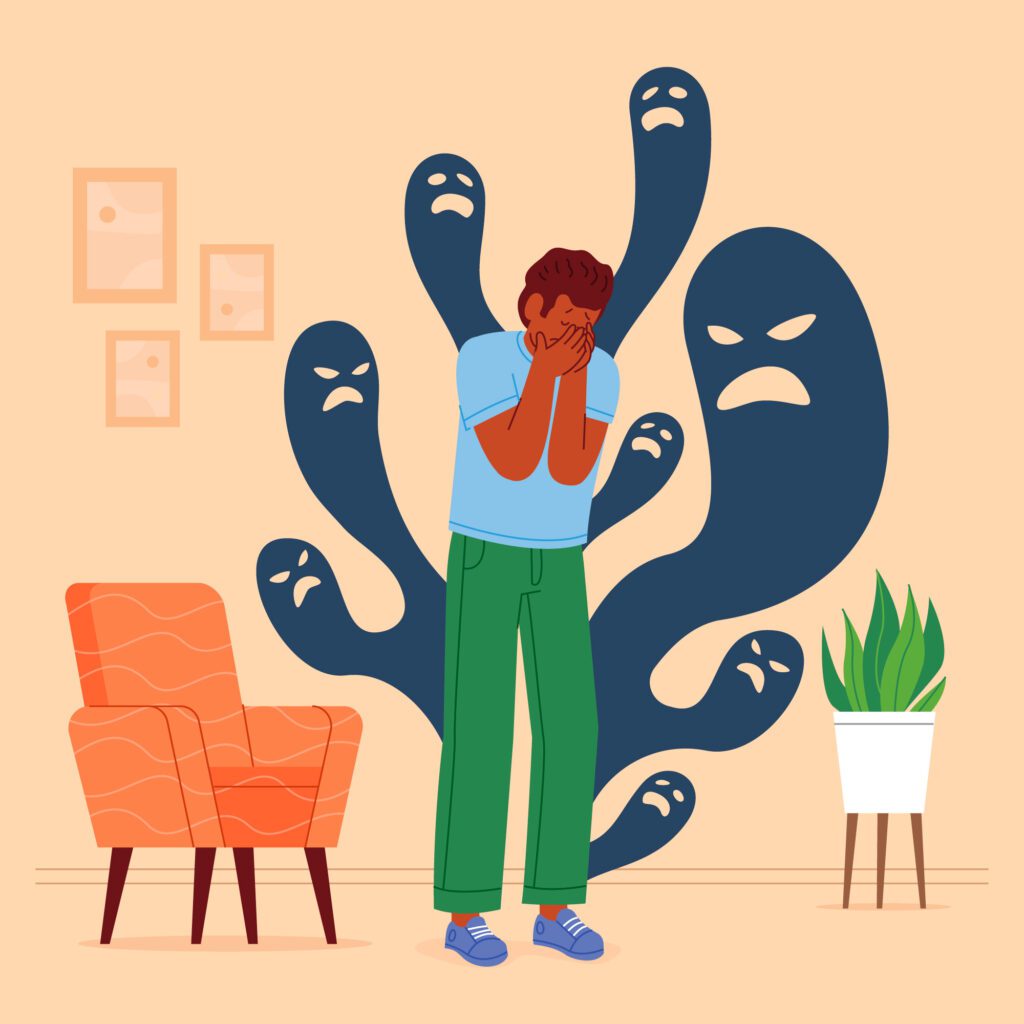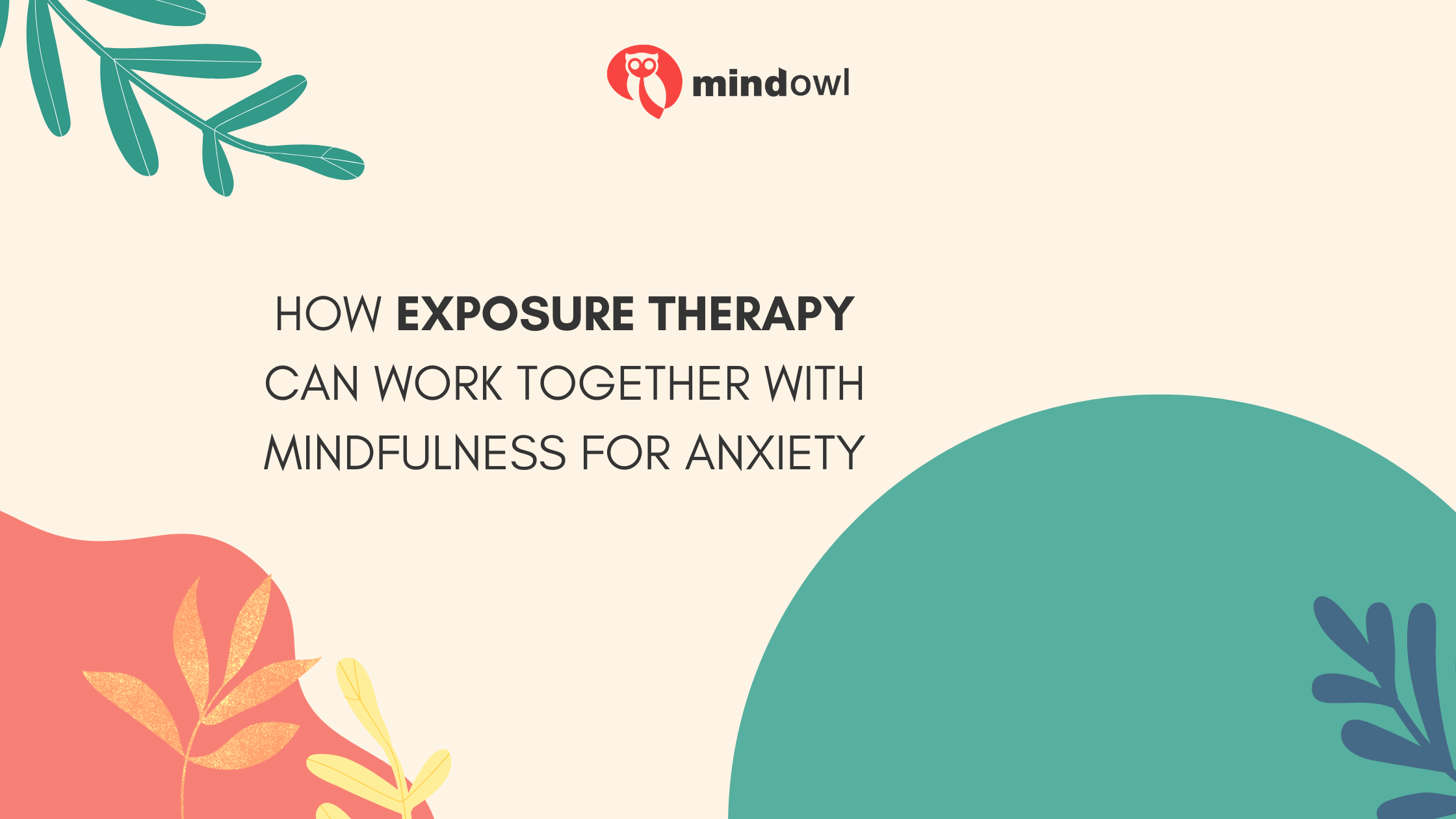This post was developed via a partnership with BetterHelp.
Imagine having a smoke alarm system that goes off every time you start cooking in your kitchen. Even though the system is designed to go off when smoke arises due to a fire, the system goes off even when you’re boiling water. Pretty soon, you may become tense knowing that you’ll set off an alarm every time you start cooking. You may develop negative emotional feelings surrounding cooking or a certain situation that begins to affect your mental health.
Anxiety can be like that smoke alarm going off without a fire in sight. Even when there isn’t a direct threat, we can learn to experience the fear of a situation. Although the human body is designed to protect us from threats, we can learn unhealthy behaviours that result in irrationally fearing something. That process can lead to anxiety.
One effective treatment for anxiety is exposure therapy, which is often used for post-traumatic stress disorder (PTSD). To understand more, check out this informative BetterHelp resource on treating anxiety with exposure therapy:
https://www.betterhelp.com/advice/therapy/exposure-therapy-for-ptsd-eases-anxiety/
In this article, we’ll take a look at how exposure therapy works for treating anxiety, and the ways mindfulness may enhance the results of exposure therapy.
What Is Exposure Therapy?
While we can learn negative behaviours that add to our anxiety, we can also choose to unlearn those behaviours and receive some relief from anxiety. To go back to cooking example, there are ways to cook without distress from an alarm. Even if someone starts to have negative feelings about cooking or some situation, it’s possible to become more comfortable with the situation through exposure.
In exposure therapy, a person is brought into contact with the situation or irrational fear that is causing them to feel symptoms of anxiety. Through the process of being exposed to the situation causing them to feel anxiety, they can begin to unlearn their fear.
Exposure therapy is often used to treat PTSD, but can be an effective treatment for anxiety disorder. It’s also important to remember that PTSD doesn’t just happen to people who go to war. A wide number of people experience PTSD after domestic abuse, or assault, even witnessing someone being attacked can be enough to cause someone to experience PTSD. The result is people can feel like they’re under attack, even when no immediate threat is present.
Forms Of Treatment That May Involve Exposure Therapy
While exposure therapy has different techniques, some people may have already experienced a form of exposure therapy while receiving treatment for a mental health condition. In EMDR therapy, a person is asked to bring up the traumatic memory during the desensitization and reprocessing phase. That is a form of exposure therapy. Talk therapy may involve a process where a person describes events that are disturbing to them to their therapist, which is also a form of exposure.
These are examples of other modalities using exposure therapy, whereby the person becomes less sensitized to the event or memory and may be able to lower their feelings of disturbance surrounding the event. So even if someone hasn’t engaged in exposure therapy, they may have experienced it as part of their therapy sessions. Let’s look now at the kinds of exposure therapy in more detail.

Exposure Therapy Techniques
If someone is afraid of cats, their therapy will involve coming into contact with cats at some point. But what if someone’s anxiety is tied to their feelings and memories? Just because the source of distress isn’t in person, that doesn’t mean there’s no way to confront it. This brings us to two distinct types of exposure therapy techniques: Where the confrontation takes place in the imagination (imaginal) and when it takes place in real life (in vivo).
Imaginal Exposure
When you can’t confront something like a memory in real life, a therapist can help a person turn to their imagination to confront a fear or thought. Imaginal exposure therapy can take several forms that include confronting the fear out loud and confronting the source of anxiety that takes place within our minds.
For example, if someone has been in a skiing accident, they may try to imagine what it feels like to be in control skiing down a mountain. Often an imaginal exercise can still involve vivid feelings, as the mind cannot necessarily distinguish between real and imagined events. They can both feel real. For this reason, it’s important to understand that just because someone isn’t in close physical contact with their fear doesn’t mean that it won’t be extremely triggering.
Imaginal exposure can also be achieved through creative writing. In this instance, the therapist can guide a person to write a story or a play about their anxiety or irrational fear. Writing and journaling can also be a format for confronting one’s fearful feelings.
In Vivo Exposure Therapy
The term in vivo is Latin for “within the living.” With in vivo exposure therapy, a person physically confronts the source of their fear of something in the living world. For a person who is irrationally afraid of going to grocery stores, this would mean eventually going into a grocery store. It may also involve a high level of anxiety being triggered.
But the point is for the person to be able to feel the anxiety and overcome their fear by realizing there’s no direct threat to their safety. In this way, a person can learn to ignore the false alarms being set off by their body’s warning system. Usually, this process takes more than one session, and the person works on learning skills to more effectively confront their source of anxiety before it happens in real life.
Prolonged Exposure Therapy
Additionally, prolonged exposure therapy is an integrated method that combines multiple exposure and mindfulness techniques. Often used for those experiencing PTSD, prolonged exposure may combine imaginal, in vivo, mindfulness techniques, and psychotherapy to maximize the effectiveness of treatment. Prolonged exposure treatments for PTSD often involve eight to 15 sessions of 90 minutes, according to the National Center For PTSD.
A more holistic approach, prolonged exposure treatment in part involves talking about the trauma with a therapist. Forms of homework may be assigned to the person receiving treatment. This could range from documenting ongoing symptoms in a journal to recording instances of getting closer to the previously avoided situation.
Prolonged exposure generally also includes guidance on complementary techniques, such as mindfulness exercises, which may help to support a person through treatment.
Coupling Mindfulness With Exposure Therapy
Understandably, exposure therapy and confronting one’s fears can be an intense process. By coupling mindfulness with exposure therapy, a person may be able to find more calm space away from their fears.
According to research on mindfulness-based exposure therapy, a mindfulness exercise may provide a way for people who have experienced trauma to increase their emotional regulation.
Emotional regulation refers in a broad sense to a person’s ability to exert control over their emotions in differing situations.
Someone with a higher level of emotional regulation can exert a higher level of control over their response to their environment. They’re also able to prevent themselves from becoming overcome by emotions in social situations.
By improving one’s emotional regulation, it may be possible to improve a person’s level of engagement in confronting their source of distress. In short, mindfulness may help strengthen our ability to tackle difficult emotional feelings.
Mindfulness Exercises And Exposure Therapy
While mindfulness can help strengthen our emotional regulation and improve results in exposure therapy, it’s not always easy to know where to start. Some people associate mindfulness with taking an hour to meditate three times a day, but in reality, the process can be far easier and faster once you know some of the ways to engage in mindfulness. Let’s look now at some of the different ways a person can bring more mindfulness to their life.
The Mindfulness Body Scan
The body scan is a mindfulness practice some people may already recognize from past therapy sessions. The wonderful thing is that it’s easy to practice by yourself without needing the guidance of a therapist.
In the body scan, we start at either the head or toes and then work our way across each part of our body. Start by closing your eyes or finding a soft gaze for your eyes, then slowly work from the toes (or start with the head).
Notice whether you feel any tension or soreness in your feet without making any judgements or feeling negative about the state of any body part. Stay curious as you move across each part of the body, and keep noticing any interesting sensations that come up. Continue until you have moved through your entire body.
Some people continue with the body scan in the opposite direction. So, if you start with the head and then go down to the toes, you’ll do a return trip back to where you started at the head. If you prefer the aid of a guided body scan, check out these audio mindfulness resources from the UC San Diego Center for Mindfulness.
The Five Senses Mindfulness Exercise
The five senses exercise encourages us to slow down and experience the world around us through our senses. It’s an easy exercise that’s fast and requires no special equipment.
First, look for five things in your immediate environment you can see. Then find four things you can feel. Next, find three things you can hear. Then find two things you can smell. Finally, find one thing in your surroundings you can taste. Whether you have a snack nearby, a delicious beverage or a plain old glass of water, find something edible to put in your mouth that allows you to experience the sense of taste.
In Conclusion
As with all forms of learning, exposure therapy is a process. The process involves facing irrational fears, which are uncomfortable. There will be successes and failures along the way, and that’s okay. Remember to get the support you need, and don’t stop seeking ways to address the source of your anxiety. Once someone can confront their fears, they often have the power to feel more in control of their lives.
MindOwl Founder – My own struggles in life have led me to this path of understanding the human condition. I graduated with a bachelor’s degree in philosophy before completing a master’s degree in psychology at Regent’s University London. I then completed a postgraduate diploma in philosophical counselling before being trained in ACT (Acceptance and commitment therapy).
I’ve spent the last eight years studying the encounter of meditative practices with modern psychology.


